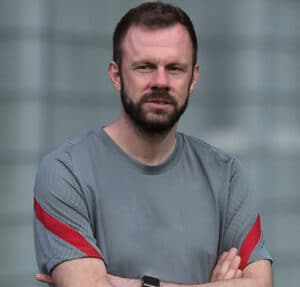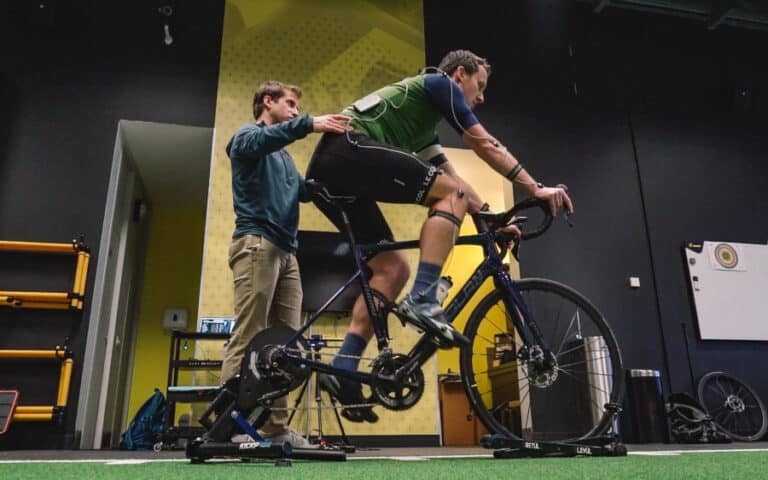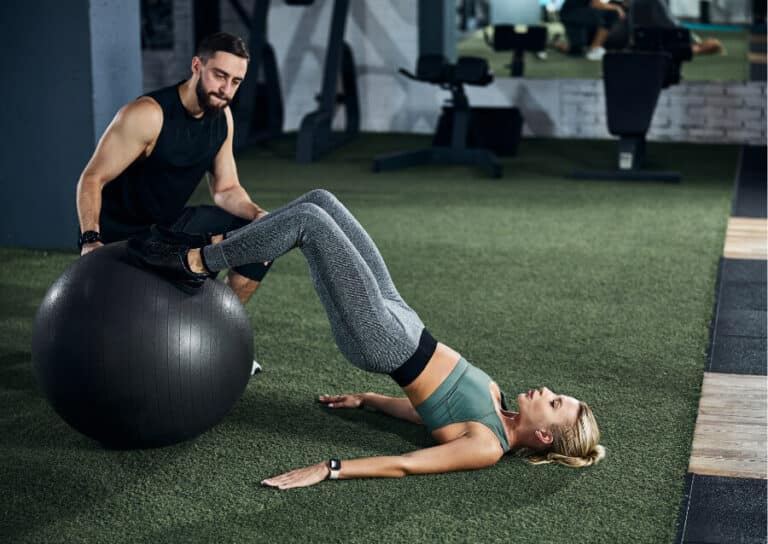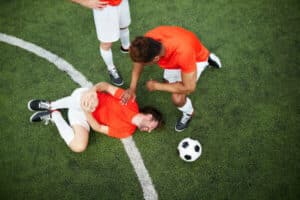
For anybody who has played football the run on role in their junior football days was usually one of the parents or coaches who would jog over with a bucket and sponge (hence the nickname) and splash cold water onto the afflicted limb or cut regardless of its location or severity, and to be fair it usually worked a treat!
If you were really lucky the team may have a first aid kit including a can of cold or “magic” spray which would often have both the player and the “bucket and sponge” man coughing in a cloud of spray whilst the magic took effect, and again, remarkably, it usually did.
So what is the difference at elite level? Are we really just a glorified bucket and sponge man or woman who is buying the injured a player a bit of time to allow pain and discomfort to settle enough that they can carry on?
Well…sometimes…yes!
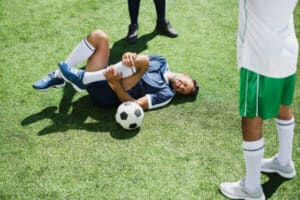
This one is about football…
This blog is specific to the demands of the run on role in elite football as it is unique to the sport. I often watch Rugby and will keep a close eye on the medical staff involved in the game as they do laps of the pitch to patch players up and as they are on the pitch as play continues are often trying to do so as rucks and mauls unfold around them!
Fair play to them and the miles they cover in a game.
In football (aside from in obvious acute emergencies) we are not allowed onto the pitch until the ref calls us on and the game is stopped until we leave again (usually with the player brought to the side of the pitch with us unless they were subjected to a foul / yellow card in the process of the injury).
Serious injuries can and do happen in football. Any of us who witnessed the collapse of Christian Eriksen were willing the medical staff on the pitch (supported by emergency services) to resuscitate the player from a cardiac arrest and most of us have also had to deal with serious head injuries, potentially serious spinal injuries and serious joint dislocations and fractures.
Get qualified
In order to be the lead member of the medical team onto the pitch we all have to have completed the FA ATMMIF course (repeated every 3 years with yearly recaps) and this course focuses on medical emergencies and serious injuries which we may have to deal with at football matches, training sessions, in and around the training ground or when travelling with the team.
This highly practical and interactive course will help you to develop essential core and extended skills through a series of skill rapid practice scenarios and formative assessments.
Content will focus on:
- Medico legal aspects and duty of care of working in football
- Emergency action planning for football
- Structured A-E approach of the injured player
- Sudden cardiac arrest in football
- Basic and Advanced Life Support (BLS and ALS)
- Use of Automated External Defibrillators (AED)
- Advanced airway management and oxygen therapy
- Management of the critically ill player (inclusive of invasive techniques)
- Fractures and Dislocations in football and pain management
- Spinal injury and management in football (inclusive of extrication)
- Head injury management and the FA Concussion guidelines
- Maxillo-facial injury in football
- Medical emergencies in football
Who is it for?
The FA ATMMiF course is designed for doctors and physiotherapists who have the primary responsibility for the management of injured players.
They assume a level of knowledge and competencies prior to taking part, and so learners should:
- Be a doctor with a GMC registration number • Be a physiotherapist, paramedic or nurse with an HCPC registration number • Be a Graduate Sports Therapist: Sports Therapy degree and Member of the Society of Sports Therapy and have successfully completed The FA L4 ITMMiF in the past three years or have an expiring ATMMiF qualification
Link to FA Learning – https://thebootroom.thefa.com/learning/qualifications/the-fa-level-5-advanced-trauma-medical-management-in-football
Thankfully the vast majority of the time (in relation to matches) we don’t have to deal with serious illness and injury, but we have to be ready to.
Get Experience
It takes a long time to add experience to qualification when working in football; this is because unlike our colleagues in rugby we aren’t doing laps of the pitch and being called into action constantly in the game.
Most games you don’t have to enter the pitch but will be continually monitoring the players from the sidelines in terms of any issues they may pick up or be carrying; other games you can be really busy and constantly on and off (I think the most for me in one game was 7-8 times in a United – Arsenal game back in 2018).
I was doing the maths and trying to work out how many matches and training sessions I’ve covered.
At academy level I probably covered around 100 games over a 3 year period at Leeds United and Man City. Those early days at Leeds covering teams as young as U-9 (or a little bit older such as the U-15 with a certain Mr. Milner in the team) usually involved me picking players up and just letting them calm down if they had a knock. But I did also deal with my first fracture (a wrist) at that level and my first decent cut eyebrow.
At U21 (reserve team) level at LFC I would estimate covering approx 60-70 games.
At first team level a conservative estimate would be an involvement in approx 800 games where I have been “run on” Physio for around half of those.
And this is why I think it takes a long time to be classed as experienced in this role. Across the various levels of football I have probably “ran-on” in around 600 games. If I assume that in half of those I don’t need to enter the pitch we are down to 300.
And of the occasions I do enter the pitch the serious injuries are thankfully very rare.
So, what do you need to do the “run on” role well?
Firstly, you need to be prepared for the worst which is where the relevant training, equipment and team around you is vital.
Cover training sessions and reflect on them
You need to cover training sessions as well as matches. Whilst the risk of injury in matches is approx 10 x higher than it is in training you can accumulate a lot of experience by covering training sessions too.
If I assume I’ve “covered” at least 4 training sessions a week over the duration of my career then I’m probably at close to 4000 of them.
Add that to the games I’ve covered and I may just be getting close to the 10,000 hours to consider myself an expert!
When the medical cover of training is truly connected with the rest of the MDT it enables us to join up the physical complaints of players after a session with the mechanical demands placed upon them within it. This is important to contextualise the numbers and data produced and ensure our decisions and interpretations are human and underpinned by data rather than vice versa.
Those accumulated hours also allow us to recognise patterns in movement so that we can spot small changes in a player’s gait and body language.
This early alert system to change is equally as useful in also recognising when how they are presenting from an altered movement perspective isn’t an immediate concern (which allows us to allay the concerns of the coaching staff during the games when emotions are heightened).
Bigger games don’t mean bigger responsibility
The bigger the game the more supported you are by medics and paramedics, the irony is that it’s when you are alone at an academy level game that you are likely to have to deal with something on your own until help arrives.
Our typical home match-day medical staff will include 2-3 physios / 2 doctors + cardiac and orthopaedic consultants and a full paramedics team.
If things get serious my job is to get the rest of the team on as soon as possible.
I suppose you have to be able to work under pressure. It kind of becomes normal to do your job in those circumstances but in reality you are doing something under the gaze of an audience both in the stadium and on TV (all of whom will have an opinion on your decisions and actions).
When I think back to how a “watched assessment” with one Senior member of staff would strike fear into me as a Junior Physio I would freeze if I really thought about all those eyes and cameras around a stadium on match-day!
The truth is that in that moment in the middle of a stadium you become totally conditioned to block out the surrounding noise and focus on your job.
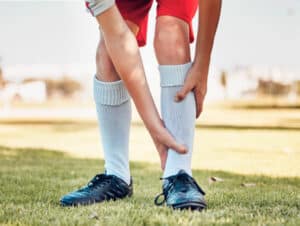
I’d be lying though if I said that was the case when I was called up at short noice to be run on physio for my first 1st team game back in 2008. A champions league game away at PSV.
In moments of anxiety we are familiar with “fight or flight” and as I went through my normal pre-match routine of treatments and strapping I did have a moment or two of thinking I would just dart for the door and never come back.
Thankfully I stuck around to see it through and with the support of an experienced Doctor alongside me in Dr. Mark Waller was called into action only once; to deal with a cut lip for Javier Mascherano.
(It’s amazing how often blood injuries seem to occur whenever the team are in a light or bright kit, pretty sure we were in grey that night so the blood will light up on every piece of kit and require a full change; a persistent bleeding wound in an area which is difficult to stitch/glue or compress in rainy conditions is a nightmare!)
Still, a totally surreal experience at the time.
So, do we make some decisions which with hindsight we would change.
Of course.
But this stems from the desire to keep players on the pitch and balance this with making decisions to protect them**
**this is in relation to soft tissue / joint injuries. Another blog will deal with the separate and serious issue of head injuries and concussion
If we made a decision based exclusively on pain and distress in the immediate aftermath of a heavy kick on the shin the player would be removed…and be really unhappy a few minutes later when that pain subsided.
The key is to quickly (under the gaze of a referee trying to speed you up and a manager who will be desperate for info on his player) carry out a rapid subjective and objective assessment of the potentially injured structure whilst receiving information about the mechanism of injury in your ear-piece.
We will always give the player every chance to play on (risk v reward) and sometimes give them a chance to try it whilst readying the coaching staff to make a change if they are unable to run it off.
Sometimes I enter the pitch alone and at other times it is with the Doctor. This is quite a fluid decision between myself and Jim Moxon. If there is an obvious significant cut or head injury we will go quickly and together with the Doc leading. If I think I need a second opinion on a joint (especially laxity) then I will ask for a second opinion and he will join me. Sometimes it is good to be a pair to manage the situation (eg if players are crowded around or we need to speak with the referee) and support each other if it’s a tough call.
It helps if you understand the game and the subtleties of it, whilst you get used to watching the game 4 or 5 seconds behind the action to check for any latent reactions (and follow this up with the replays we now thankfully have instant access to) we will try for example not to have to enter the pitch just as we are about to defend a set-piece (as the player will be removed) unless absolutely necessary.
We will always try to return the player as close to their position as possible after removal so they can rejoin play easily and will help give a potential replacement player time to prepare by giving the bench early information if the issue is likely to result in a substitution.
We will discuss with a player if they want to be removed on a stretcher or if they would prefer to walk. Of course on occasion this decision is clear cut but the vast majority of injuries are safe to walk off. It’s just the twisting / turning / jumping you don’t want them doing.
Players will do everything they can not to leave on a stretcher wherever possible.
A typical on pitch assessment probably lasts 20-30 seconds. It will be done whilst trying to get information from the player (often in their second language).
The key to becoming confident in run on role is to do it. Alongside the qualifications required you need to cover training sessions and games so those skills and decision making processes can be practised and challenged.
We are taught a structured process to deal with all injured players where we assume the worst initially and deal with the factors which will put the player in danger first.
Namely airways, breathing and circulation, head injury, spinal injury and significant bleeding.
After this we focus on the specific injured structure (joint, ligament or muscle) and determine the players ability continue using our clinical skills which we would normally do in the treatment room but in this situation are carried out in the pitch.
Look at the assessments happening on pitch at various matches each week and you will see ligament laxity, muscle contraction and muscle length tests being carried out on the grass.
To sum up..the vast majority of things that you deal with from a medical perspective on a football pitch will be minor.
Most games you won’t do anything and your key responsibility is decision making, aside from the occasional emergency ankle strapping there is unlikely to be anything magical in the bag to reverse a significant problem (we might give that magic spray a go on occasion though!)
Despite this is it is vital that a system is in place to deal with more serious issues should they arise, and at every game your skills may be just seconds away from being required.
Be prepared.
For the minor issues have a systematic way of assessing and clearing a player to continue which needs to be done in seconds and a decision made.
Balance the desire to keep them on the pitch with the risks of doing so.
And finally, get your miles on the clock in terms of experience; nothing beats being exposed to being the person in the middle, the one making the decisions to layer the required real life skills onto the ones that the various pitch side emergencies courses equip you with.
The run on role is sometimes played down and an assumption made that anybody can do it but to do it well takes years and hours of cumulated experience. It’s a familiar skills set called upon in the most unique of environments.
I’m certainly still learning and still approach every match hoping for the best but prepared for the worst.
